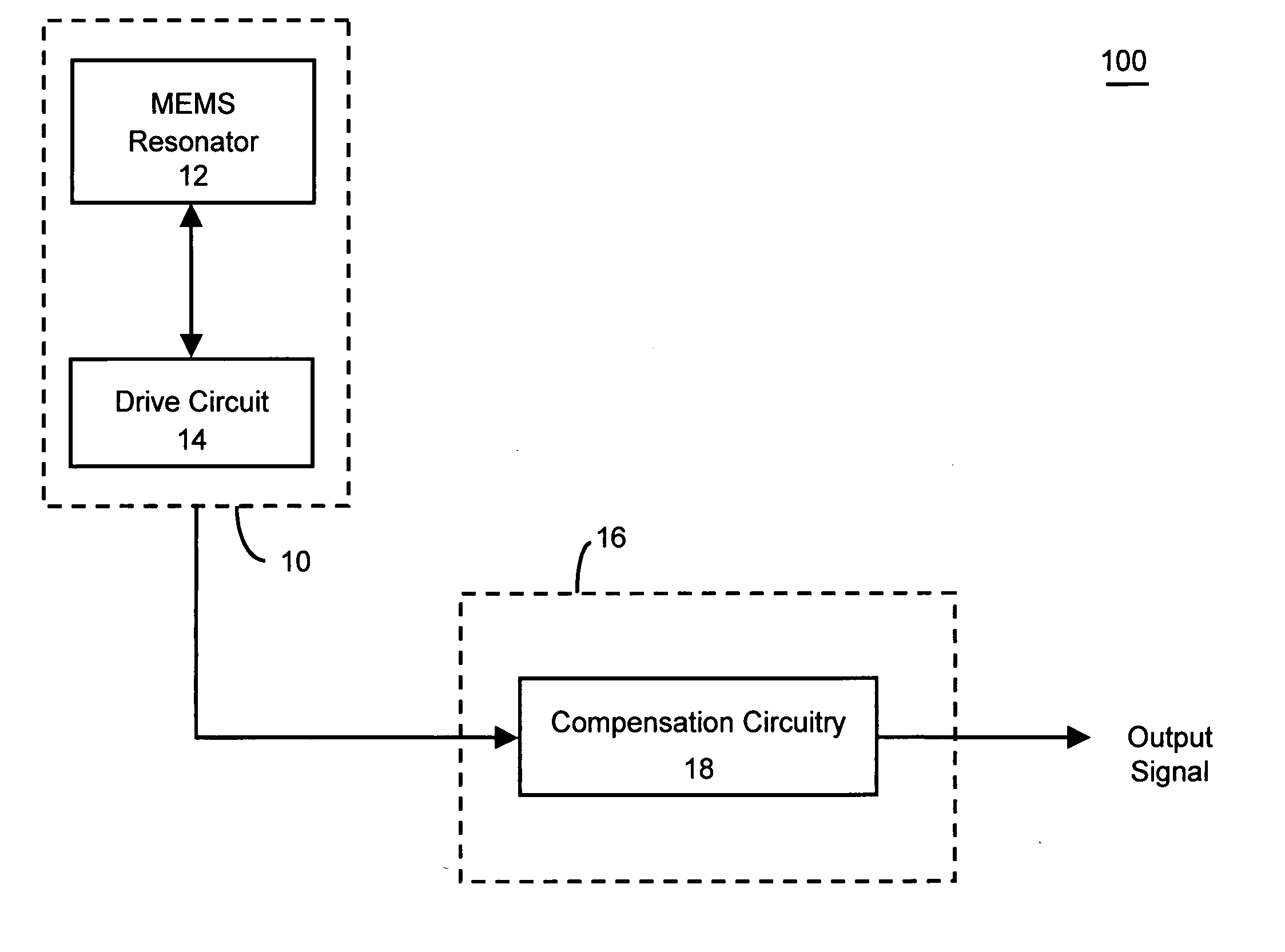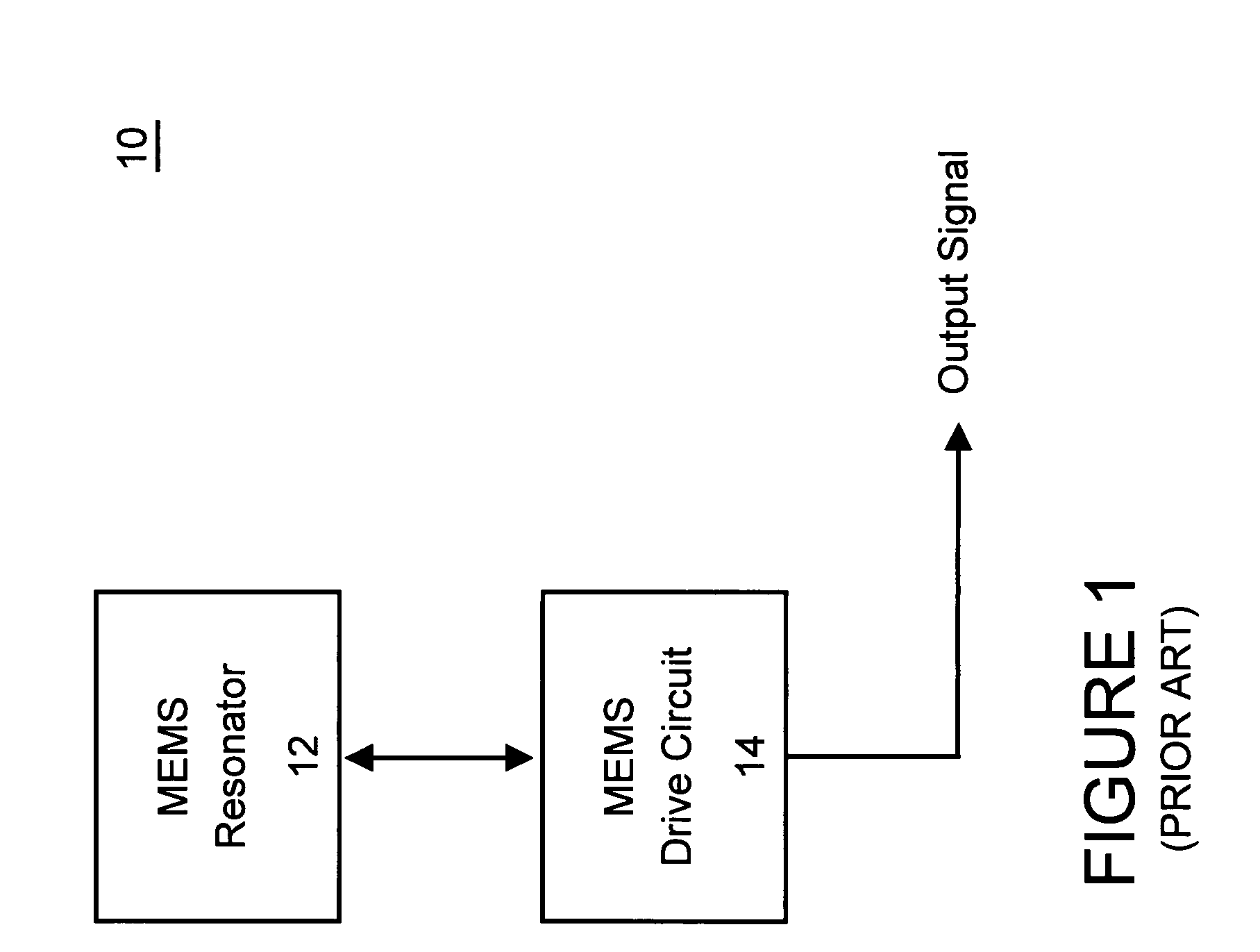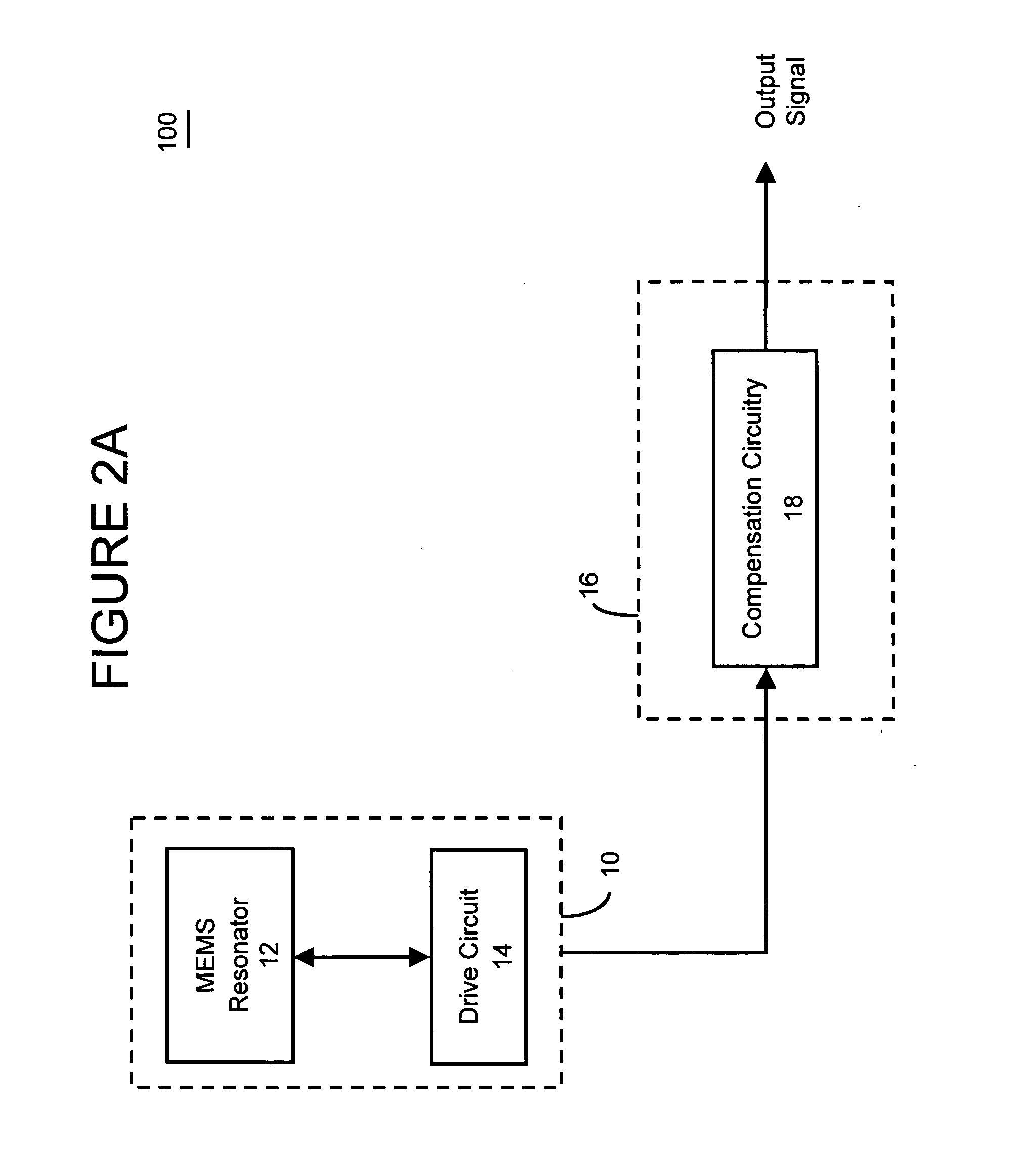Frequency and/or phase compensated microelectromechanical oscillator
a micro-electromechanical and oscillator technology, applied in the field of frequency and/or phase compensation of micro-electromechanical oscillators, can solve the problems of increasing the cost and difficulty of manufacture of the resonant structure, difficult stability and control of the oscillator, and requiring costly control circuits
- Summary
- Abstract
- Description
- Claims
- Application Information
AI Technical Summary
Benefits of technology
Problems solved by technology
Method used
Image
Examples
Embodiment Construction
[0048] There are many inventions described and illustrated herein. In one aspect, the present invention is directed to a frequency and / or phase compensated MEMS oscillator (hereinafter “frequency / phase compensated MEMS oscillator” or “compensated MEMS oscillator”) for providing a highly accurate, stable, controllable, programmable, definable and / or selectable output signal(s). In this regard, the controllable, programmable, definable and / or selectable aspect of the output signal(s) may be the frequency and / or phase of the output signal. For example, the present invention may provide a highly accurate, stable, controllable, programmable, definable and / or selectable output signal(s) having a predetermined, predefined and / or specific frequency (for example, a lower frequency of 1 Hz to 100kHz, a more moderate frequency of 1-100 MHz or a higher frequency of 1-10 GHz) and / or a desired phase (for example, 0°, 90° and / or 180°). Indeed, the frequency and / or phase of the output signal may be...
PUM
 Login to View More
Login to View More Abstract
Description
Claims
Application Information
 Login to View More
Login to View More - R&D
- Intellectual Property
- Life Sciences
- Materials
- Tech Scout
- Unparalleled Data Quality
- Higher Quality Content
- 60% Fewer Hallucinations
Browse by: Latest US Patents, China's latest patents, Technical Efficacy Thesaurus, Application Domain, Technology Topic, Popular Technical Reports.
© 2025 PatSnap. All rights reserved.Legal|Privacy policy|Modern Slavery Act Transparency Statement|Sitemap|About US| Contact US: help@patsnap.com



